Observer Name
AE & UAC Staff
Observation Date
Thursday, November 28, 2024
Avalanche Date
Thursday, November 28, 2024
Region
Salt Lake » Big Cottonwood Canyon » Days Fork » Two Dogs
Location Name or Route
Days Fork - Two Dogs
Elevation
10,200'
Aspect
Northeast
Slope Angle
39°
Trigger
Skier
Avalanche Type
Soft Slab
Avalanche Problem
Persistent Weak Layer
Weak Layer
Facets
Depth
19"
Width
80'
Vertical
450'
Snow Profile Comments
Soft slab failed on weak layer of facets
Comments
This was a sobering reminder of the current dangers of our weak faceted layer, triggered remotely at rocks. Our 2-person group approached Two Dogs via LCC. At the top, we were greeted by a gorgeous untouched run. We did a brief snowpack assessment, two deep ski cuts at the top with zero signs of collapsing, sluffing, or cracking. We had a discussion about safety and acknowledged the weak layer concerns. Both members had read the avalanche report that morning and suspected sluffing would occur, but that the likelihood of a large propagating slide was low given the relatively shallow snow pack.
After a beacon and radio check, Skier 1 began descending from the point of the last ski cut. After three turns, there was a large remote soft slab release from a rocky weak point about 20-30ft to Skier 1's right. The crown was about 18-24" and failed on a thin layer of faceted snow with exposed rocks throughout. It propagated about 800'ft to the bottom of the run. Skier 2 radioed immediately to skier 1, who was able to exit the slide path on the left and found a safer zone with lower angle near trees. Another second slide was triggered at Skier 1's feet as they made the exit to safety, still about 300ft from the bottom, again with a 18" crown 20ft wide with 300ft propagation down. Via radio communication, the decision made to have Skier 1 navigate to the bottom via the already-avalanched path, transition to uphill mode, and have Skier 2 descend carefully down through the avalanche debris with full visual. Thankfully, no further slides were triggered and we were able to exit via Hideaway Park/West Bowl.
In hindsight, we absolutely should have given more respect to the faceted weak layer, despite what we felt wasn't a significantly heavy load of new snow. We didn't dig a formal pit or perform an ECT, which may have given us more pause. Both of the skiers average around100 days in the SLC backcountry annually and this was a first for both of us. It was an important learning experience and we are thankful that it didn't result in any injuries or carries/burials.
Some key takeaways:
-Weak layers are dangerous and can result in large, propagating slides even without a huge load/snowpack
-Radio communication likely saved Skier 1 from being carried and even buried. Having your partner watching you with effective immediate radio communication (instead of yelling) can save lives. It also helped greatly as we were making a safe plan of descent for Skier 2.
-It was helpful to have already discussed a safety exit plan if we encountered heavy sluffing (although it turned out to be an actual avalanche), talking about this ahead of time was a game changer for us. We also knew there was a safer exit via Hideaway which was very necessary to get I out of the hang fire.
We will be giving North and Northeast aspects a wide berth until this weak layer is healed. stay safe out there and happy Thanksgiving
[Forecaster Comment: Thanks for the excellent writeup. We're happy everyone is ok. The 3rd photo is from a separate observation that was submitted to the UAC.]
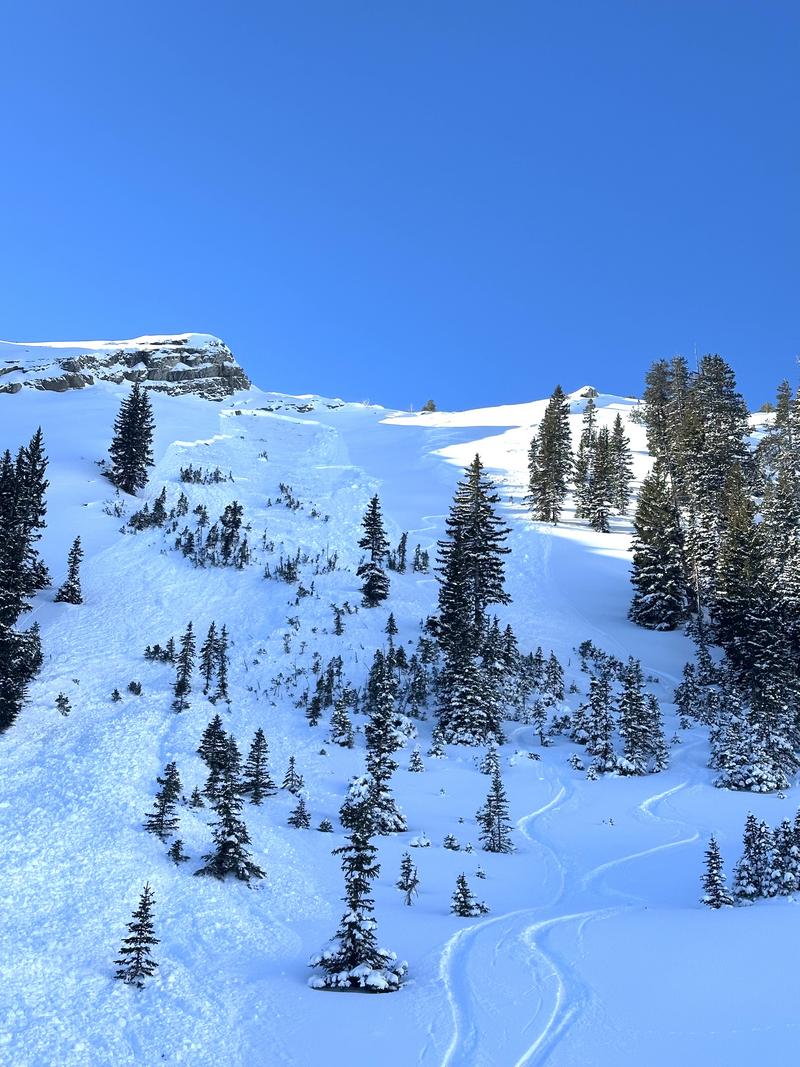
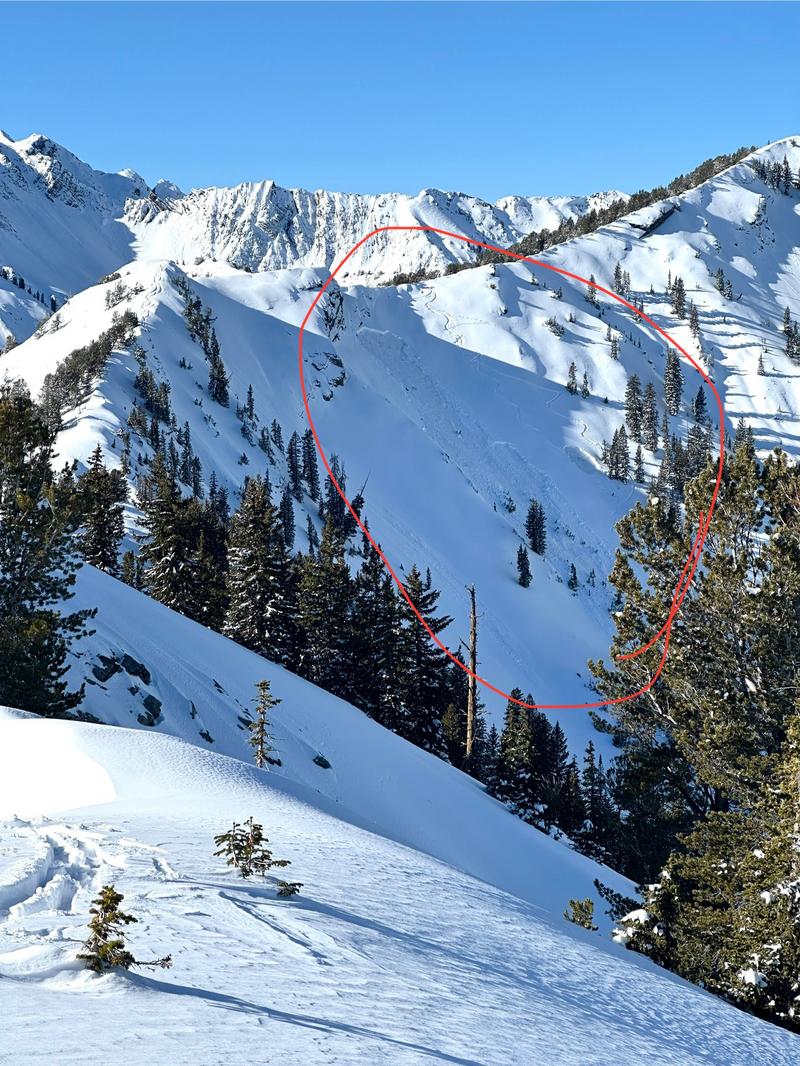
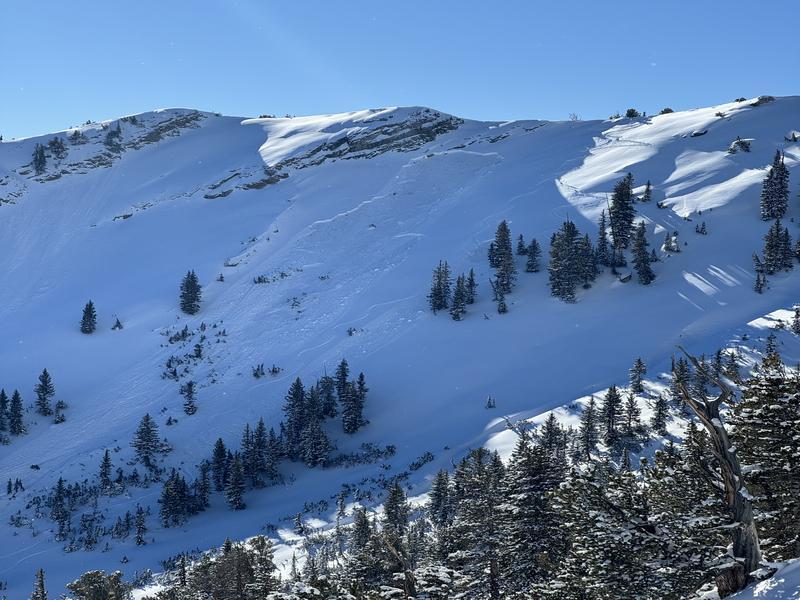
Comments
Forecaster Comments: On November 29, 2024 we went out to look at this crown and get a better idea of what the avalanche failed on. We found that this avalanche failed on a layer of facets above a deteriorating crust 5" (14cm) from the ground. We got propagation with cutting (ECTPV x 2) on this layer. What stood out about this profile was the amount of wind slab just underneath the new snow. Read our full observation HERE.
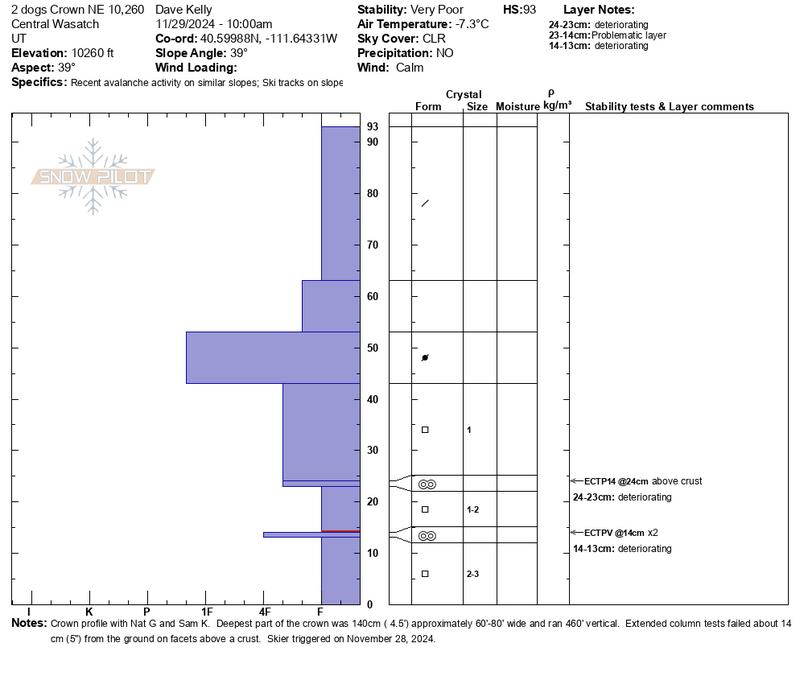
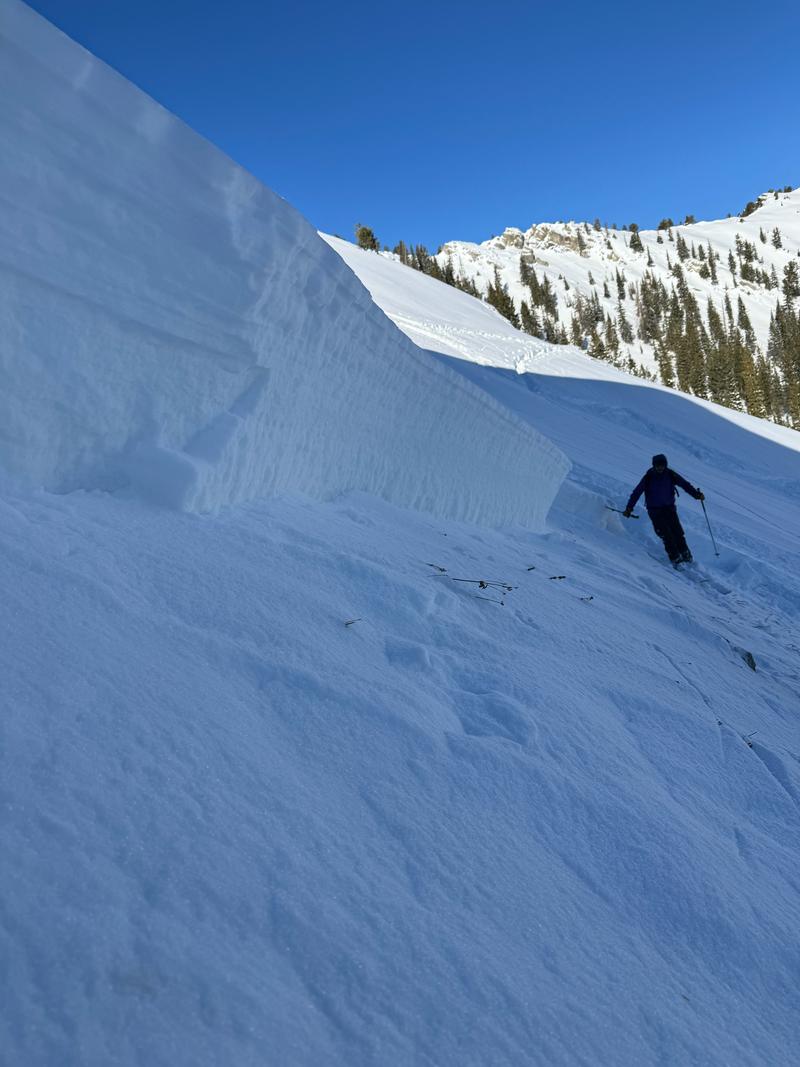
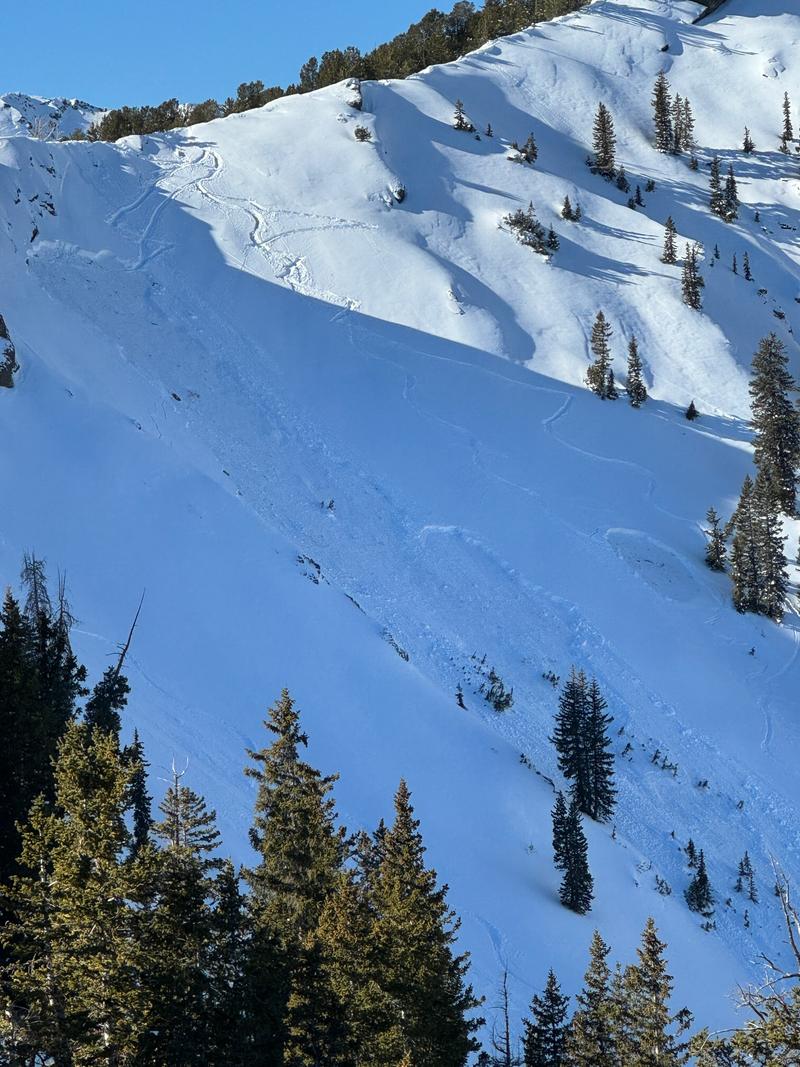
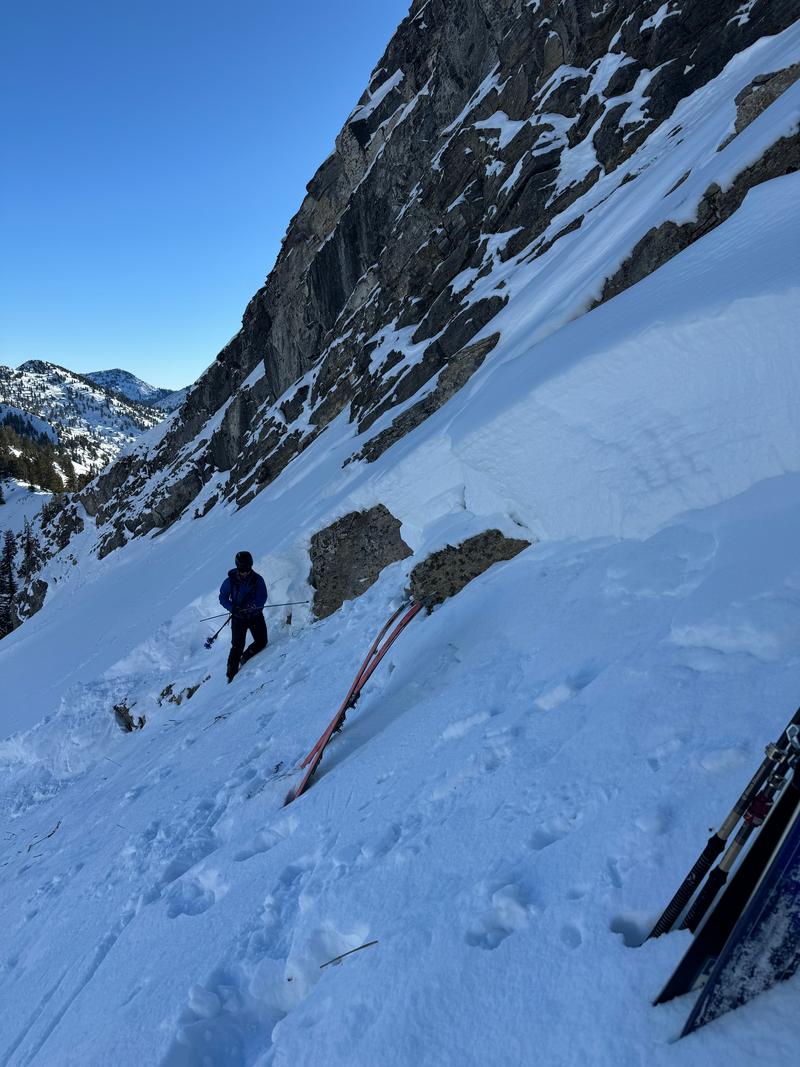
Video
Coordinates



